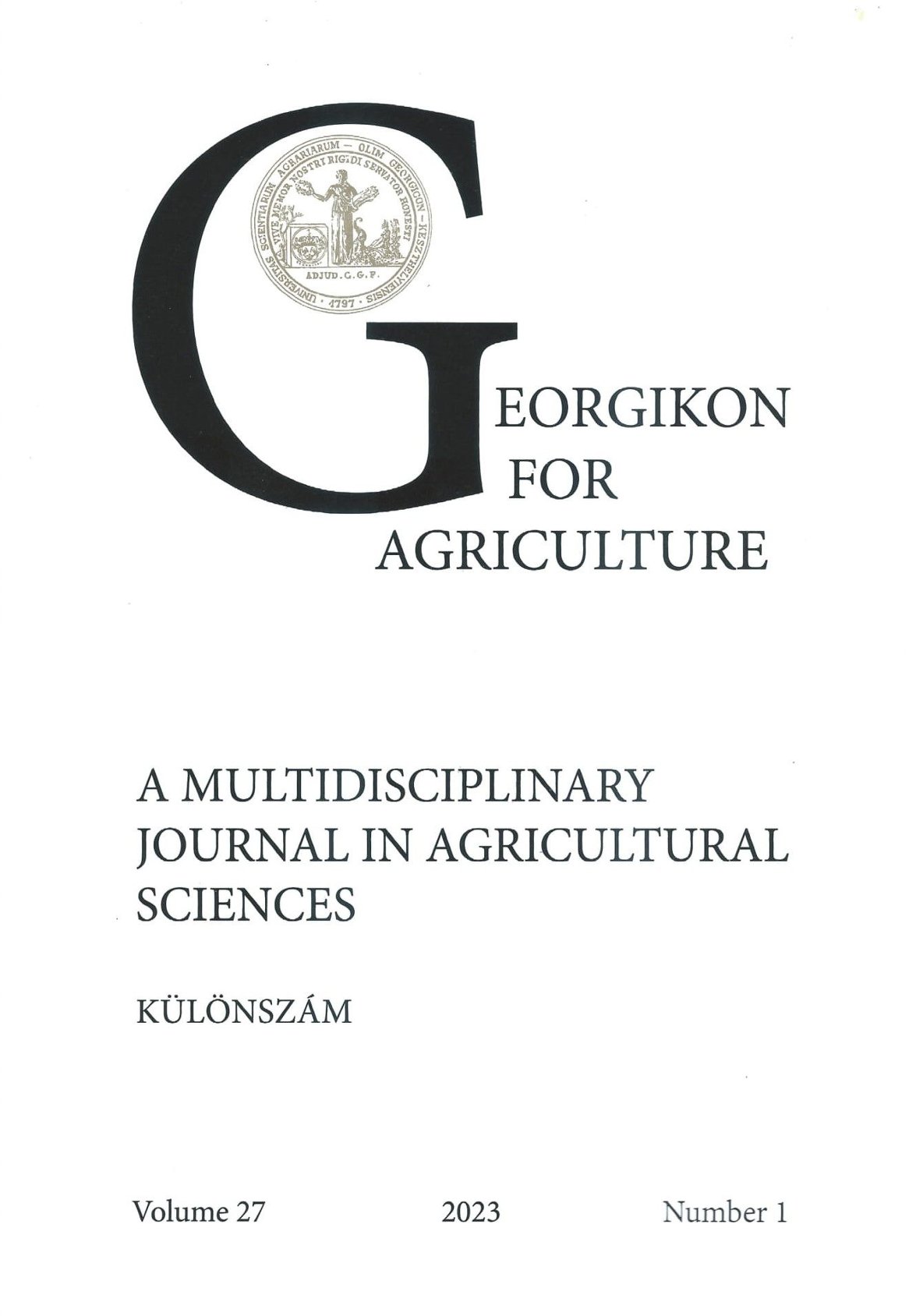A prokloráz penetrációja a növényi szövetekbe posztharveszt alkalmazás során és mérgező hatása házityúk-embriókra
Kulcsszavak:
prokloráz, fungicid, ökotoxicitás, MRL értékAbsztrakt
Kutatásunk során citromokon tanulmányoztuk a prokloráz penetrációját a növény mélyebb szöveteibe. Háromféle koncentrációban, 1, 4 illetve 8 perc behatási idővel bemerítéses módszerrel, emellett permetezéssel vittük fel a készítményt a gyümölcsre. A kezelési kísérletek azt mutatták, hogy mind a bemerítési időnek, mind a vizsgálati anyag koncentrációjának szignifikáns hatása volt a gyümölcs héján mérhető reziduum-szintekre. A permetezéssel felvitt növényvédő szer alacsonyabb reziduum-szintet eredményezett, mint az ugyanolyan koncentrációjú bemerítéses kísérletek legtöbbje. Az élelmiszer-toxikológiai vizsgálatokon túl a házityúk tojásokon is alkalmaztuk a növényvédő szert, hogy információt nyerjünk az ökotoxikológiai tulajdonságairól. Ezen vizsgálatok során bebizonyosodott, hogy a prokloráznak jól kimutatható embriókárosító hatása van.
Hivatkozások
Stein, B., Michalski, B., Martin, S., Pfeil, R., Ritz, V. and Solecki, R. 2014. Human health risk assessment from combined exposure in the framework of plant protection products and biocidal products. J Für Verbraucherschutz Leb. 9. https://doi.org/10.1007/s00003-014-0915-7
Domingues, I., Oliveira, R., Musso, C., Cardoso,. M, Soares, A. M. V. M. and Loureiro, S. 2013. Prochloraz effects on biomarkers activity in zebrafish early life stages and adults. Environ. Toxicol. 28. 155-163. https://doi.org/10.1002/tox.20710
Baumann, L., Knörr, S., Keiter, S., Nagel, T., Segner, H. and Braunbeck, T. 2015. Prochloraz causes irreversible masculinization of zebrafish (Danio rerio). Environ. Sci. Pollut. Res. 22. 16417-16422. https://doi.org/10.1007/s11356-014-3486-3
Glavinic, U., Tesovnik, T., Stevanovic, J., Zorc, M., Cizelj, I., Stanimirovic, Z. and Narat, M. 2019. Response of adult honey bees treated in larval stage with prochloraz to infection with Nosema ceranae. PeerJ. 7. e6325. https://doi.org/10.7717/peerj.6325
Alkassab, A. T., Kunz, N., Bischoff, G. and Pistorius, J. 2020. Comparing response of bufftailed bumblebees and red mason bees to application of a thiacloprid-prochloraz mixture under semi-field conditions. Ecotoxicology 29. https://doi.org/10.1007/s10646-020- 02223-2
Bro, E., Devillers, J., Millot, F. and Decors, A. 2016. Residues of plant protection products in grey partridge eggs in French cereal ecosystems. Environ. Sci. Pollut. Res. Int. 23. 9559- 9573. https://doi.org/10.1007/s11356-016-6093-7
Letöltések
Megjelent
Folyóirat szám
Rovat
License
Copyright (c) 2023 Buzás Anna, Major László, Batta Sára, Lányi Katalin

This work is licensed under a Creative Commons Attribution-NonCommercial-NoDerivatives 4.0 International License.
The articel is under the Creative Commons 4.0 standard licenc: CC-BY-NC-ND-4.0. Under the following terms: You must give appropriate credit, provide a link to the license, and indicate if changes were made. You may do so in any reasonable manner, but not in any way that suggests the licensor endorses you or your use. You may not use the material for commercial purposes. If you remix, transform, or build upon the material, you may not distribute the modified material. You may not apply legal terms or technological measures that legally restrict others from doing anything the license permits.




 Georgikon for Agriculture
Georgikon for Agriculture